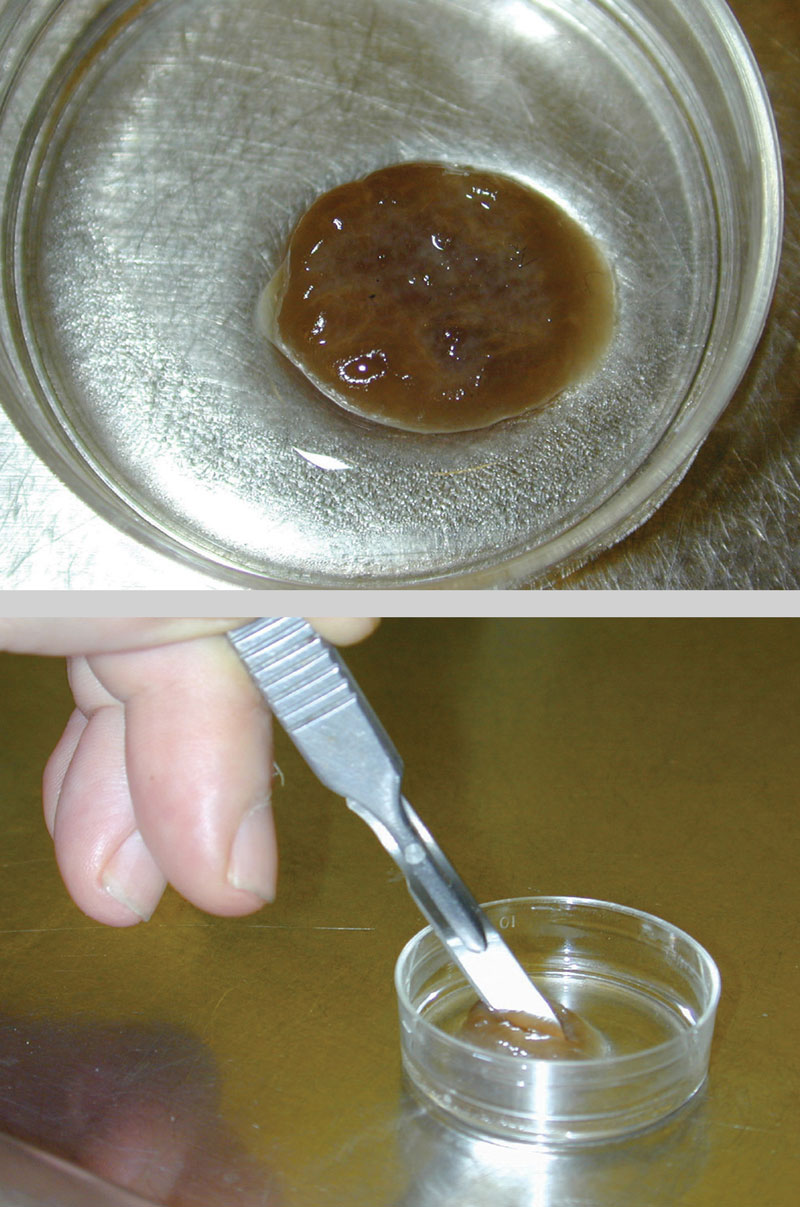Ingestion / Disembodied Cuisine
Toward victimless meat
Oron Catts & Ionat Zurr
“Ingestion” is a column that explores food within a framework informed by aesthetics, history, and philosophy.
As Claude Lévi-Strauss has noted, throughout history humans have observed strict divisions between what can and cannot be eaten. However, these distinctions are not universal. In some cultures, for example, dogs are “man’s best friend”, selectively bred for behavioral and aesthetic qualities; in others, they are a foodstuff. As human society becomes more urban and direct relations to what is considered to be “wild nature” weaken, this behavior—which Peter Singer has referred to as “speciesism in practice”—is increasingly problematized. As our understanding of the interconnectedness of life deepens, society becomes increasingly aware of the inconsistencies inherent in the value-based hierarchies we employ to rationalize our exploitation of living systems—a category of entities that, after all, also includes vegetables.
Initiated in 1996, the Tissue Culture & Art Project is an ongoing research and development project into the use of tissue technologies for the purpose of creating semi-living entities. Semi-living entities are located on the fuzzy border between the living and the non-living, the grown and the constructed, the born and the manufactured, and the object/ subject. They consist of living biological systems that are artificially designed and need human and/or technological intervention in their construction and maintenance. The semi-living rely on the nurturer/constructor to care for them; they are a new class of object-being that has both striking similarities to and important differences from other human artifacts such as constructed objects and selectively bred domestic plants and animals (both for pets and in husbandry). This new palette of manipulation is significantly linked to ethical concerns and emerging philosophical perplexities.

For our “Disembodied Cuisine”; project, we used methods similar to those developed for the production of bio-artificial body parts (tissue engineering). The process usually involves the construction of biodegradable/bio-absorbable polymer scaffolds in the desired shape; these are then seeded with living cells from complex organisms and cultured in bioreactors to create semi-living entities. Our original plan was to create “victimless meat” by taking a biopsy from an animal; as the cells from the biopsy proliferate, the in vitro “steak” continues to grow and expand, and the source animal from which the cells were taken heals. (The other alternative is to use cell lines, provided they are non-mutagenic.[1]) While there is still more research to be done to fully eliminate the animal-based products used for the nutrients for the cells, this work presents and questions a future in which meat (or protein-rich food) will be produced without the need to harm animals, and one in which ecological and economical problems associated with the food industry (growing grains to feed the animals and keeping them in economically rationalized conditions) can be reduced dramatically. However, by growing our food we also create a new class of exploited organism—that of the semi-living.
The idea and research into this project began in 2000, at the Tissue Engineering and Organ Fabrication Laboratory at Massachusetts General Hospital, Harvard Medical School. The first “steak” we grew there was made out of prenatal sheep cells (skeletal muscle) that were harvested as part of research into using tissue-engineering techniques in utero. We used these prenatal sheep cells, harvested from a sheep uterus, to grow steaks the size of a coin. (Since then, NASA has been experimenting in growing tissue-engineered fish skeletal muscle for food consumption in space travel.)
As there was a risk that the laboratory we worked with at the time might lose its license if we attempted to eat the results of our experiment, we realized that we could only taste our “meat” in an alternative venue. For “Disembodied Cuisine,” which was part of the international biological art exhibition “Art Biotech” at Le Lieu Unique in Nantes in March 2003, we used a Xenopus cell line to grow frog skeletal muscle over biopolymers for food consumption. As we were going to be eating the first ever tissue-engineered steak in France, we decided to use frogs as a comment on the disgust that many French people express towards engineered food, a disgust that parallels the reaction of some non-French people towards the idea of eating frogs’ legs.
We grew the semi-living frog steak for almost three months inside a micro-gravity bioreactor in a tissue culture laboratory we constructed in the gallery. This enabled the steak to grow in 3D; however, it lacked the texture of a steak (for that we would need to “exercise” the muscle tissue in culture). We drastically reduced the use of antibiotics and by the end of the growth period (the conclusion of the exhibition), we marinated the frog in Calvados overnight. It was then fried in honey and garlic, both rich sources of natural antibacterial agents. Then, together with the two curators, the chef, and six volunteers, we feasted on the semi-living steak. Unfortunately, as the growth period was too short, much of the polymer did not degrade and the steak had the texture of jellied fabric.
Soon after the installation, we were approached by an animal welfare organization with a request to grow semi-living human steaks—specifically, the group’s director asked for a feast based on a steak grown from her own flesh.
For more information, see www.tca.uwa.edu.au.
- Cell lines are immortal cells that can divide indefinitely when given the appropriate conditions (such as fresh nutrient medium and space).
Oron Catts, an artist/researcher and curator, is co-founder and artistic director of SymbioticA—the Art & Science Collaborative Research Laboratory at the School of Anatomy & Human Biology, University of Western Australia. He founded the Tissue Culture and Art Project in 1996.
Ionat Zurr, a curator and a biological artist, is an artist-in-residence at SymbioticA—the Art & Science Collaborative Research Laboratory at the School of Anatomy & Human Biology, University of Western Australia. She co-founded the Tissue Culture and Art Project in 1996.